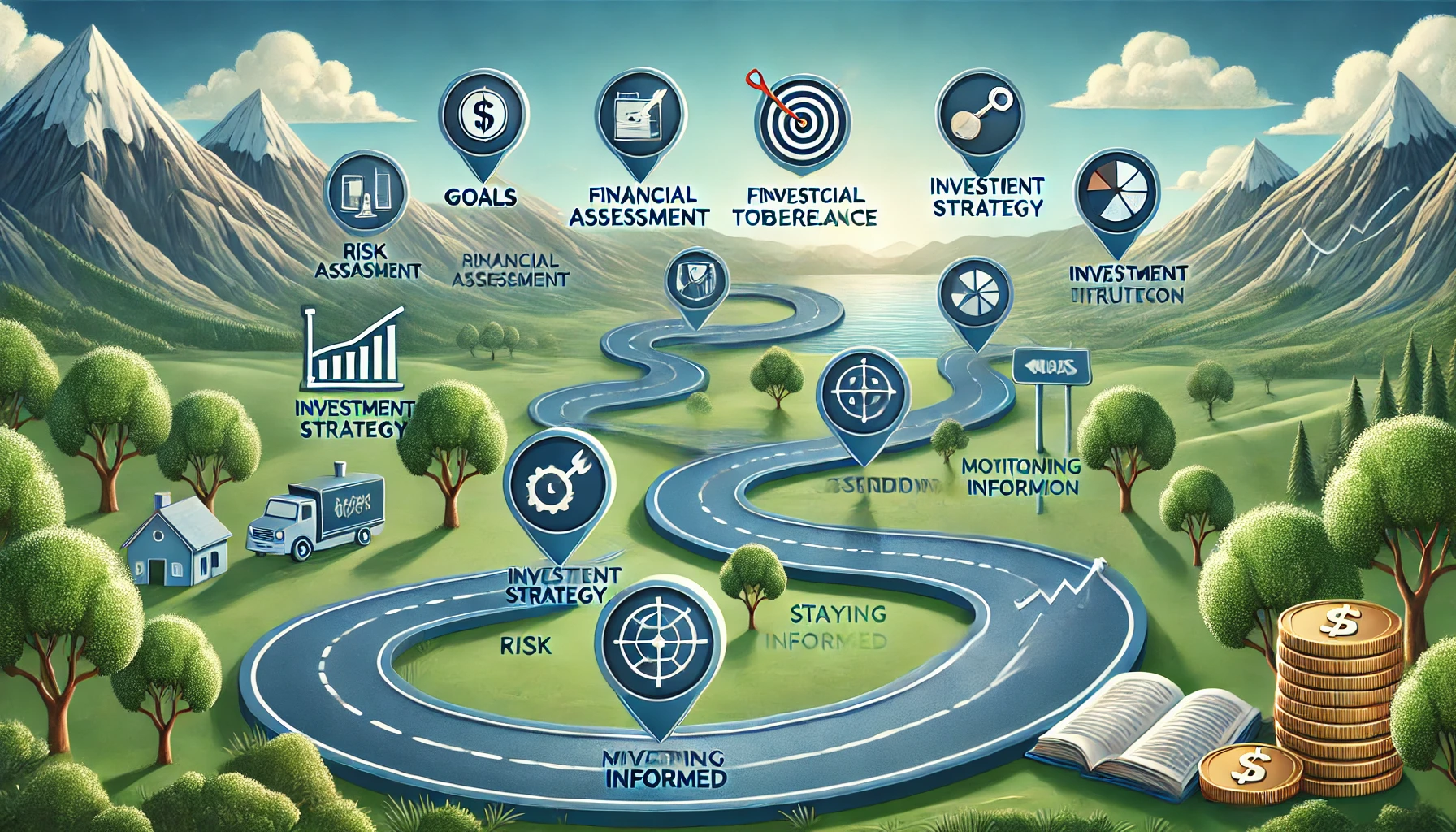
Creating a solid investment plan is like building a roadmap to your financial future. It’s about setting clear goals, understanding your options, and making informed decisions. Let’s break down the process into simple steps.
Ever wondered how some people seem to have their finances all figured out? It’s not magic; it’s planning. This guide will walk you through developing a comprehensive investment plan. We’ll cover everything from defining your financial goals to picking the right investment options and managing risks. By the end, you’ll be well on your way to making smart investment choices.
Step 1: Define Your Financial Goals
First things first: What do you want to achieve with your investments?
- Short-term Goals: These are things you want to accomplish within the next five years, like saving for a vacation, buying a car, or building an emergency fund.
- Medium-term Goals: These are goals you plan to achieve in the next five to ten years, such as paying for your children’s education or buying a house.
- Long-term Goals: These are goals that are ten or more years away, like retirement or leaving a legacy for your family.
Having clear goals helps you decide how much to invest and which investments are suitable for each goal.
Step 2: Assess Your Current Financial Situation
Before you start investing, it’s crucial to know where you stand financially.
- Income and Expenses: Calculate your monthly income and track your expenses.
- Debt: List all your debts, including credit cards, student loans, and mortgages.
- Savings: Note your current savings and investments.
Understanding your financial situation will help you determine how much money you can allocate to investments.
Step 3: Determine Your Risk Tolerance
Risk tolerance refers to how comfortable you are with the ups and downs of the market. It’s essential to know this because it influences your investment choices.
- High Risk Tolerance: If you’re okay with potential losses for the chance of higher returns, you might invest more in stocks.
- Low Risk Tolerance: If you prefer stability and lower risk, you might focus on bonds and savings accounts.
There are various online questionnaires that can help you assess your risk tolerance.
Step 4: Choose Your Investment Strategy
Now, it’s time to decide how to invest your money. There are several strategies to consider:
- Growth Investing: Focuses on stocks that are expected to grow faster than the market average.
- Value Investing: Involves picking stocks that appear to be undervalued.
- Income Investing: Concentrates on investments that pay regular dividends or interest.
- Diversification: Spreads your investments across different asset classes to reduce risk.
The Secret to Making Big Money by small cap
Step 5: Diversify Your Portfolio
Diversification is about not putting all your eggs in one basket. It helps reduce risk by spreading your investments across various assets.
- Stocks: Ownership in companies that can offer high returns but with higher risk.
- Bonds: Loans to companies or governments that pay back with interest; they’re generally safer than stocks.
- Real Estate: Property investments that can provide rental income and appreciation.
- Mutual Funds and ETFs: Pooled investment funds that offer instant diversification.
- Savings Accounts and CDs: Low-risk, interest-bearing accounts with guaranteed returns.
Step 6: Monitor and Rebalance Your Portfolio
Investing isn’t a set-it-and-forget-it deal. Regularly check your investments to ensure they align with your goals.
- Review Performance: Compare your investments against benchmarks and your financial goals.
- Rebalance: Adjust your portfolio periodically to maintain your desired asset allocation. If one type of investment grows significantly, you might need to sell some and buy others to keep your balance.
Step 7: Stay Informed and Adjust as Needed
The financial world is always changing, so staying informed is key. Read financial news, follow market trends, and continue learning about investing. Be ready to adjust your plan as your life circumstances and financial goals evolve.
It’s here Investor Mindset at time of inflation
FAQs
Q: How much money do I need to start investing? A: You can start investing with small amounts. Many online platforms allow you to begin with as little as 10000.
Q: How often should I review my investment plan? A: It’s a good idea to review your plan at least once a year or whenever there are significant changes in your life, like a new job, marriage, or the birth of a child.
Q: Is it okay to invest in just one type of asset? A: Diversification is recommended to reduce risk. Investing in various assets helps protect your portfolio against market volatility.
Wrapping Up
Creating a comprehensive investment plan might seem daunting, but taking it step by step makes it manageable. By defining your goals, understanding your financial situation, and making informed decisions, you’re setting yourself up for financial success. Remember, the key is to start now and keep learning along the way.

